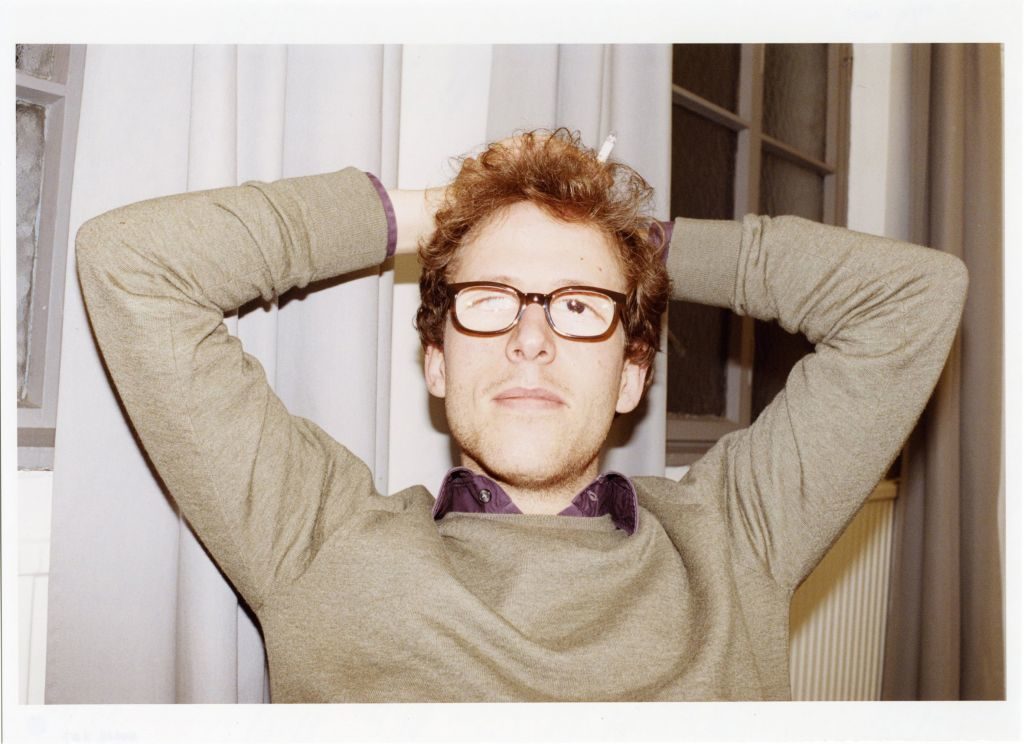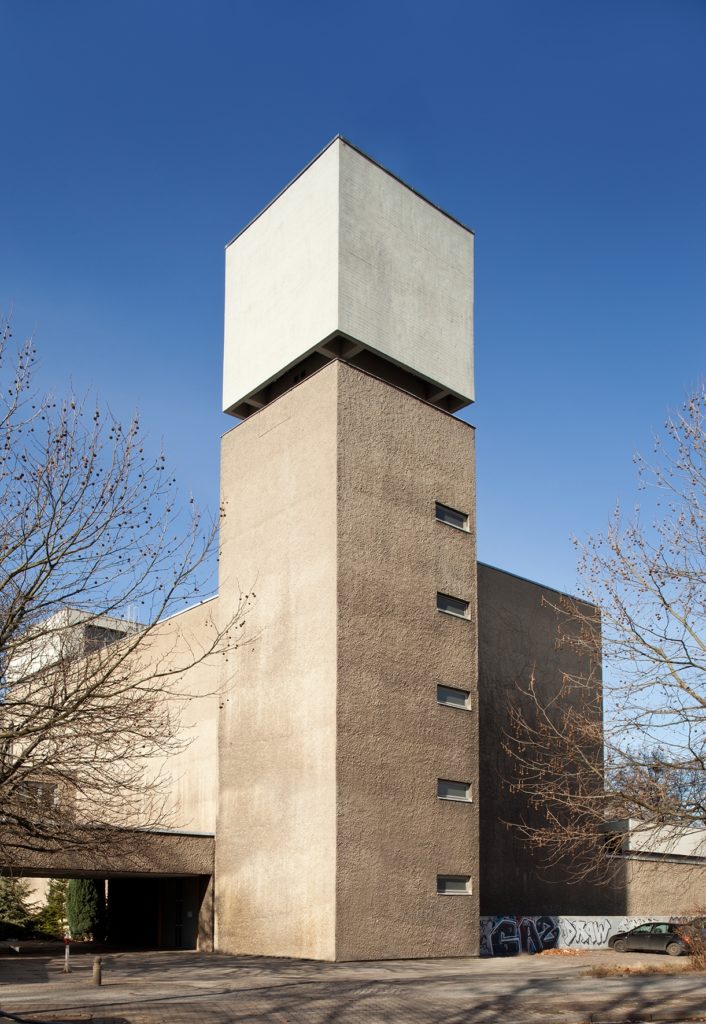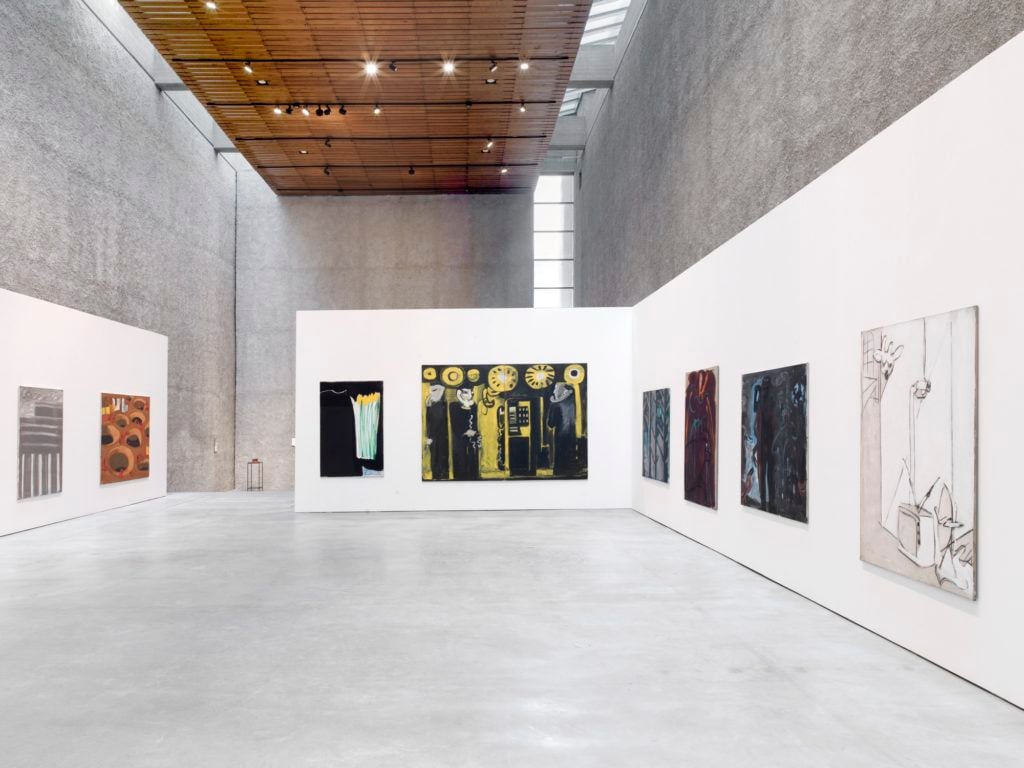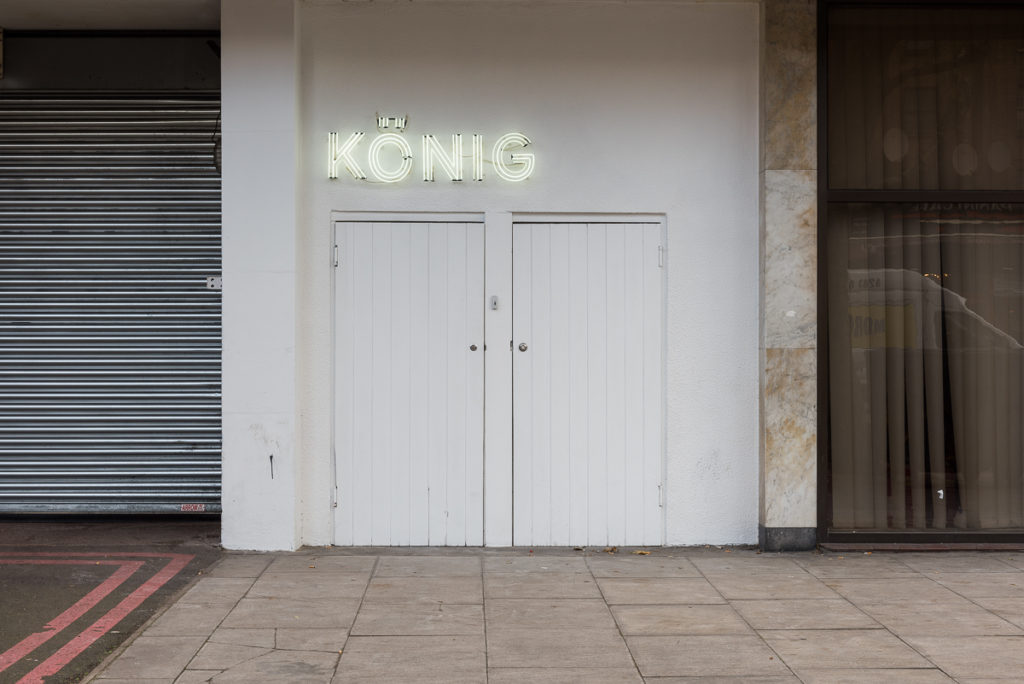Art World
‘We’re All Individuals, Fighting Alone’: Dealer Johann König on Why Art Galleries Need Smart Branding
With Brutalist buildings and a multifaceted outreach program, König is re-envisioning how galleries can market themselves.

With Brutalist buildings and a multifaceted outreach program, König is re-envisioning how galleries can market themselves.

Henri Neuendorf

Early in his career, Johann König presented an audacious exhibition for which he commissioned the Danish artist Jeppe Hein to create a giant iron wrecking ball that rolled around the gallery and completely destroyed the exhibition space. The show could be viewed as a metaphor for the Berlin-based dealer’s approach, paying little mind to conventional industry standards and forging his own innovative and quirky path—no matter the collateral damage.
König was raised in an art-saturated environment. His father Kaspar König is the former director of Cologne’s Museum Ludwig and founder of the Münster Skulptur Projekte; his uncle, Walther König, is a prominent art book publisher; and his half-brother Leo co-founded New York gallery Koenig & Clinton.
Today, he operates spaces in Berlin and London, showing such artists as Katharina Grosse, Elmgreen & Dragset, Camille Henrot, and Alicja Kwade. Apart from König’s stable of artists, what really sets him apart is his marketing skill, starting with his love of Brutalist architecture, which has become the trademark of the gallery’s identity.
The Berlin gallery is located in the breathtaking deconsecrated St. Agnes church designed by the Brutalist architect Werner Düttmann, while the London space is located in a converted parking garage that was also built in the Brutalist style. At a time when foot traffic is falling in galleries (and other retail spaces), the dealer has also championed a number of unconventional—and sometimes controversial—outreach programs to pull in audiences from all walks of life.
artnet’s Henri Neuendorf sat down with the dealer to speak about the benefits of branding and marketing for art galleries, the art market’s fear of Brexit, and how a debilitating injury to his eyesight as a young man shaped his understanding of art.
Tell me about how you started the gallery.
At first I wanted to be an artist but soon realized I didn’t have enough of an urge to make art. I still wanted to do something art-related, and starting a gallery seemed like the best way to remain independent without having to work for someone else. I grew up in a heavily artistic environment and when I was young I was incredibly annoyed with the dominance the art world played in my upbringing. But at 16 or 17 I discovered an interest, at 18 I decided that I wanted to work with art as a career, and by the time I was 20 I resolved to become a gallerist.
When I started in 2002 I had no idea what it meant to be a dealer. I had never worked in a gallery and I only knew it from a distance, although I think the thoughtlessness and naivete helped because, looking back, I wouldn’t advise anybody to follow my footsteps.
Your first exhibition with Jeppe Hein is legendary. Can you recount what happened?
It wasn’t the first exhibition, but the third or fourth. It felt like the first because it was the first show that really turned out the way I envisioned. The first exhibitions were full of compromises where I tried to serve the market by showing small, sellable work, which didn’t work at all and my gallery was pretty much finished because I ran out of money. So I commissioned Jeppe Hein to make the sphere and I actually ordered it from the fabricator without knowing how I would pay for it. I thought it would be my last exhibition and I was getting ready to go out with a bang.
To my surprise the exhibition was a huge success, and it was an important lesson because I learned that the key to being successful is to believe in the art you’re showing. I learned that the work that seems to be the least commercially viable is often the most successful. I was unbelievably lucky that success came when it did because I took so many lessons from that show, and it allowed be to make other risky decisions that contributed to my success in the future.
You suffered a debilitating injury to your eyesight in your childhood. Can you describe what happened and how this has impacted your career?
When I was 12 years old, I was playing with a firecracker that exploded in my hand, which left me with impaired vision. I think the accident greatly influenced my relationship with art because I became much more critical, and less visually stimulated. It encouraged me to focus on the substantive aspect of art. Marcel Duchamp said he was primarily interested in post-retinal art, meaning the conceptual idea behind the visual object. Duchamp’s perspective helped me a lot, and I resolved to ask questions and spend more time trying to understand context.

König Galerie, Berlin. Photo: courtesy of König Galerie.
As a dealer who has built most of your career in Berlin, you’ve been very vocal in your criticism of the German government’s cultural policies. Can a German art market ever be truly competitive within the difficult political framework?
The art market in Germany has become incredibly difficult as a result of the political framework such as the VAT increase, the cultural heritage protection legislation, and the resulting bureaucratic responsibilities associated with it. I fear there isn’t enough awareness in Germany of the consequences. It’s not just that the market can’t prosper like in London or New York, but it disrupts the whole system, and the young galleries and young artists are affected the most.
To collect art is to support artists, and the worse the climate is for young galleries and artists, the more the whole ecosystem suffers. The wealthy artists will sell their work anyway, the problem is that the money isn’t trickling down to the next generation anymore, and unfortunately I don’t think that the problem has been recognized in Germany. The biggest issue in the German art market, and perhaps in the art world as a whole, is that we’re all individuals, fighting alone. There’s no strong interest group, we don’t have a unified voice. That’s why the debate surrounding the cultural heritage legislation was problematic. The dialogue was so divisive and probably did more harm than good for us dealers. At least our new government has agreed to review the reintroduction of the reduced VAT rate for artworks—so far it’s only part of the coaliton contract, but let’s hope for the best.
I’m doing my part by working hard and doing my best to present good exhibitions. The gallery is open on Sundays, we present eight large important exhibitions and 12 smaller shows a year that are free to the public, and we offer events from yoga to school visits. We take culture and art very seriously, but I believe that a broad audience is important for the art business. I want to introduce people to art, and I believe that the more the public is exposed to art, the more the art market benefits—which is why I’m try to make art popular.
After Brexit, a lot of commentators predicted that London’s art market would relocate to other European capitals, including Berlin—and yet you decided to open a gallery across the channel. What are your thoughts on Brexit, and why did you make the move to London?
We see ourselves as a German gallery, and a Berlin gallery. In London, we’re trying to present German and European artists who may not have had a presence in the UK before. For example, Karl-Horst Hödicke is an artist who has been extremely important for Berlin, especially when Berlin was divided, and Andreas Mühe is an important photographer from East Germany who represents Germany in a very unique way though his work.
I opened the London gallery at a time when it was very difficult economically in the UK; I can’t say how it will develop in the future but London is turning out to be hard. It almost seems as if the economic situation in London is tougher than in Berlin—perhaps it’s because we’re not a deeply rooted London gallery. But I’m certainly surprised by how difficult London is turning out to be.

Installation view of Karl Horst Hödicke’s Frühe Objekte, Späte Bilder at König Galerie, Berlin. Photo: courtesy of König Galerie, Berlin.
Do you think it’s because of Brexit?
Yes. Nobody knows how the situation will develop, and uncertainty is always a bad prerequisite. Uncertainty always leads to a form of standstill and we’re seeing that in the art market too. It’s the same thing that’s made the situation in Germany so difficult with the cultural heritage protection legislation, the VAT increase, and in all the new documentary obligations. In Germany, I now have to work through a tremendous administrative burden before I’m allowed to sell an artwork.
Once the mood begins to shift it provokes the assumption that things will continue to develop in this direction which generates even greater uncertainty, which is reflected in the business, and it’s the same in London. I hope that it calms down as soon as the Brexit negotiations get underway. I do however have the feeling that there’s a grateful audience in London that’s happy about a foreign galley opening there despite the difficult circumstances.
There were persistent rumors about you looking for a space in New York. What made you decide against the US?
I wanted to become more international and was looking everywhere. I looked at Zürich, New York, London, and Los Angeles. I didn’t take a particularly deliberate approach, I just looked around each of these cities and kept my eyes open. The advantage of being in London is that I can decide to go in the morning and be there by evening. It’s also simpler to operate within the European market, which has tremendous advantages, as there is no customs. Another reason is that an arts hub like London allows us to build relationships with our international clients, especially from Asia.
You’re known as a fan of Brutalist architecture, which has become a big part of the gallery’s brand. How important is branding for art galleries? Should more galleries pay attention to this?
I think the decision to move into the St. Agnes church was an incredibly important step. Berlin’s art market relies on international visitors and exports, and we have such an impressive exhibition space that it’s really worth coming back to see the space in different constellations and different artists. I don’t think it’s enough to show art in a white cube or a prewar space anymore—I think you have to create an experience and offer visitors a lasting memory, which we’ve managed to do in Berlin.
It’s not very easy, especially for young galleries, but I think you have to create a unique framework in which to show and experience art. It’s important to find the correct place, and it’s become increasingly important now that we’re competing against iPhones and social media. While our London gallery isn’t as spectacular as Berlin, it’s an interesting space because it’s a former underground car park in West London. I think it’s incredibly important to push the boundaries in everything we do to keep things exciting.

König Galerie, London. Photo: courtesy of König Galerie.
You also launched a magazine. To what extent are you using this to reinforce the brand of your gallery?
Above all, I want to use the magazine to tell impressive stories about the gallery that don’t tell themselves. For example, in our next issue we visit the Swiss sculptor Claudia Comte, who will we show during Berlin Gallery Weekend. She’s a young woman who sources the material for her work by going to the woods with a chainsaw and cutting down trees, which is unusual, especially for a woman. It’s hard to believe, because so many artists today outsource to fabricators.
In the first issue we photographed the workspaces of our Berlin-based artists such as Katharina Grosse and Anselm Reyle, because we wanted to show that studios in Berlin offer working conditions that aren’t replicable in cities like New York or London. We want to use the magazine as a channel to show content that we aren’t able to show in our exhibitions.
How can galleries reinforce their brand messaging when they are becoming more and more uniform?
We have a lot of women in our program, and in Miami [at Art Basel Miami Beach] we wanted to present a booth with only women, which worked really well—except nobody noticed. We really hoped people would take note, but nobody did. It’s quite interesting that people didn’t see it as out of the ordinary. But as a rule I’m not a big fan of ostentatious presentations. We just try to show high quality works.
We also established a merchandise brand called König Souvenir where we’re trying to target a younger audience—although it’s more about conveying art rather than making a ton of money.
What else can galleries do to promote their brand and differentiate themselves, aside from through the artists they represent?
We do collaborations in every field, whether it’s music, fashion, or other art-related areas. But this is also seen as controversial. You can only do it as long as you stay relevant by doing important exhibitions. You have to be careful not to degenerate to a level of banality.